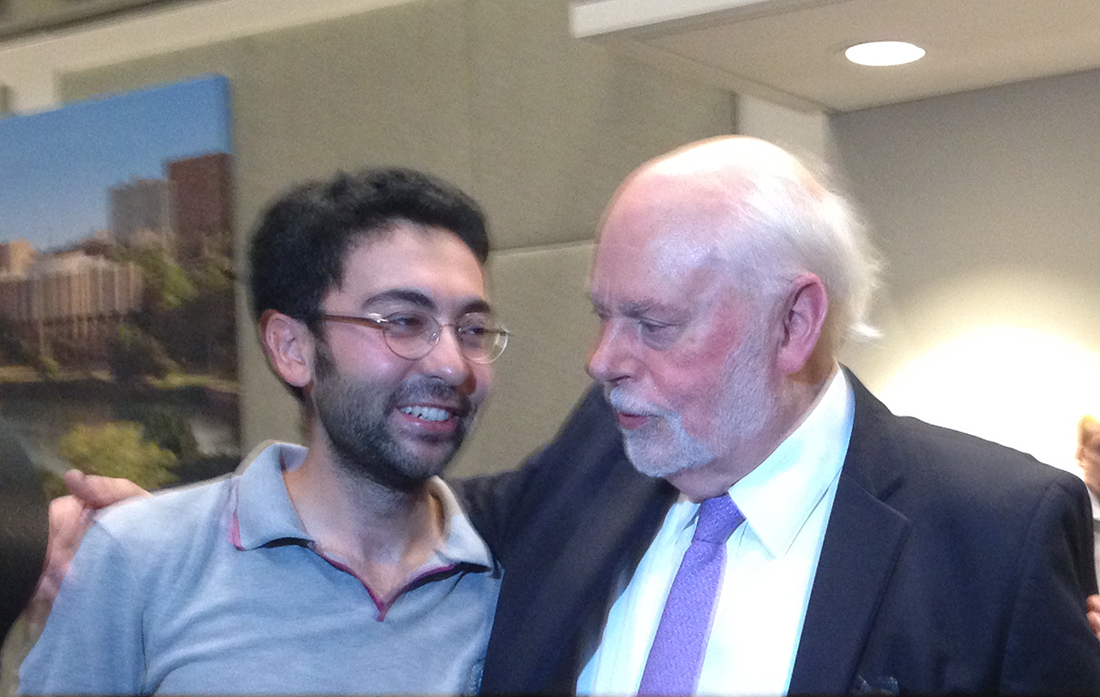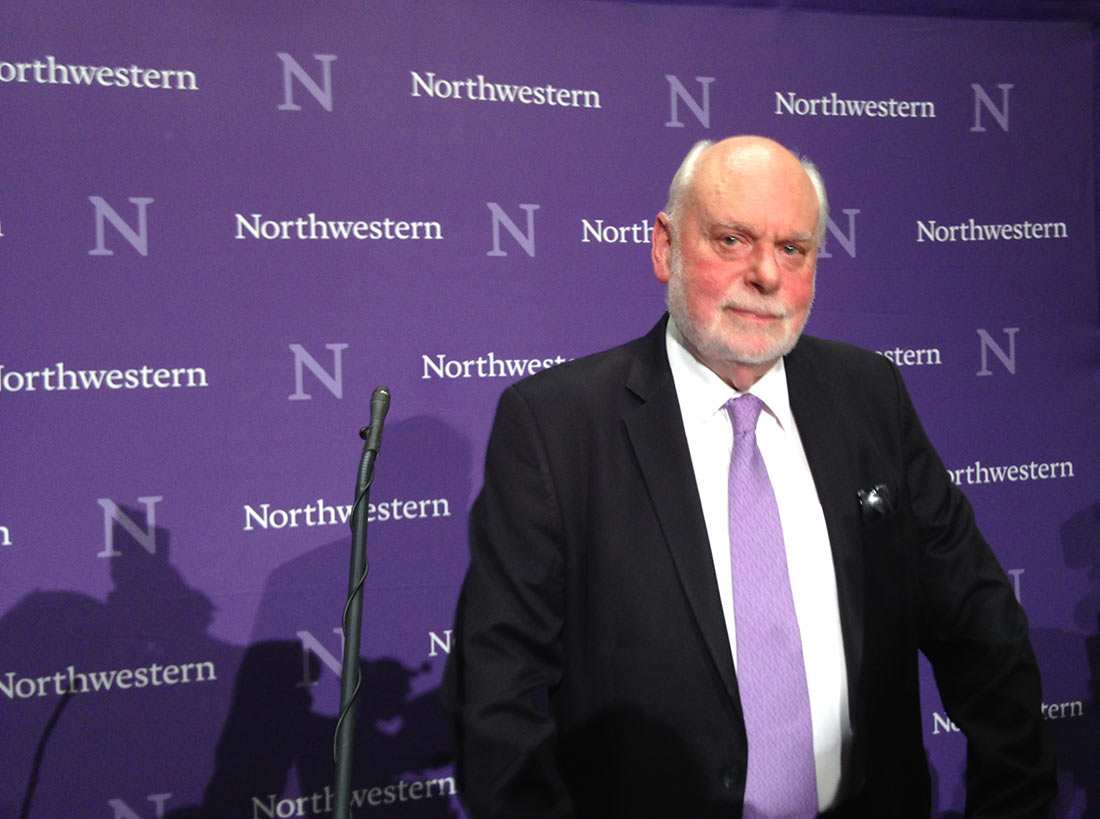by Hannah Moulthrop
Sir J. Fraser Stoddart had been asleep for three hours early Wednesday when a phone call awakened him. The Northwestern University chemistry professor had been dealing with the aftermath of last week’s home break-in and his decimated backdoor. Stupefied, he heard Swedish-accented English and thought, is this a hoax? Stoddart could hardly believe what came next: The Royal Swedish Academy of Sciences awarded him and his friends, Jean-Pierre Sauvage and Bernard L. Feringa, the Nobel Prize in chemistry.

The three scientists are receiving the prize for “their design and production of molecular machines,” according to a Royal Swedish Academy of Sciences press release. “They have developed molecules with controllable movements, which can perform a task when energy is added,” the press release states.
“New [chemical] bonds are few and far between, so I think that’s what they recognize more than anything,” Stoddart said, as his jubilant students looked on at a Northwestern University press conference.
Hasan Arslan, a post-doctoral researcher in Stoddart’s lab, studies much of what led to Stoddart’s Nobel Prize, he said. He is making molecules filled with little cavities whose size matches a smaller kind of molecule that is sometimes toxic. This size correspondence allows the smaller guest molecule to bind strongly to the larger hole-filled one, removing toxins from certain environments.
“Designing these molecular systems with the function in our mind and using all the fundamentals Fraser Stoddart has developed over the years is what’s real essential for it to work,” Arslan said.
Colleagues and students alike expressed their excitement at the news.
“It’s an extraordinary honor and we’re all very proud to be associated with you,” said Northwestern University President Morton Schapiro to Stoddart at the press conference in Evanston.
Stoddart said while the call came overnight, his success did not.
“None of us can actually forecast discovery. It comes with working for many years, in my case, in this area,” he said, adding, “It’s a long haul.”
His students testify to his years of dedication to the research and his commitment to mentoring them.
“Apart from being a great scientist, he is an excellent mentor. The level of detailed attention that he paid to my training, along with my peers, was unique for a scientist of his stature,” said Nathan Strutt, an engineer at Intel who is a former graduate student of Stoddart’s. “We would spend hours in one-on-one meetings going over results, presentations and in-progress publications. He spends every hour of his day working for his students to ensure they have successful graduate or post-doctoral careers.”
Stoddart’s passion for his work is contagious, Arslan said. He arrives at the lab earlier and stays later than many of his students.
“I want to be that dedicated to what I do. I want to like what I do as much as he does and you know, seeing him every day working so hard at the age of 74,” said Arslan. “It’s very inspiring.”
Stoddart said he was not taking a break today or the next.
“The progress of the research goes on. We’re trying to get a robust setting for the molecular switches,” he said, adding later “it is going to take a little while before we see killer applications coming along.”
Laughing, Stoddart said he’s not very smart. The IRS will receive a third of his money. After that, he plans to give back. He named UCLA, the University of Edinburgh and Northwestern among the potential universities he could donate to.


